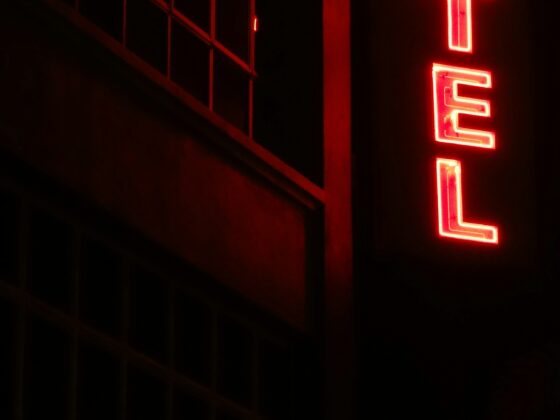
A water leak in a hotel can quickly escalate from a minor maintenance issue to a major incident if not detected in good time. Not only can this necessitate costly remedial work to fix the damage, it can also lead to insurance premium increases when the policy renews.
Take the case of an Atlantic City casino hotel where a water leak incident caused by a frozen pipe resulted in $5 million in damages. Following this incident, the property’s insurance broker projected renewal premium increases totaling close to $5 million over the following five years.
However, strategic thinking, smart technology and well trained staff can provide a robust water leak prevention strategy that protects your property, guests, and bottom line.
Step 1: Map Your Hotel’s Water Leak Risks
Start by creating a detailed inventory of every water-related vulnerability in your property. When it comes to guest areas, document all relevant items such as bathroom fixtures and HVAC units.
Your critical infrastructure deserves equal attention. Catalog areas such as mechanical rooms, boiler systems, pool equipment rooms and pump stations—these areas house equipment that can affect entire floors when compromised.
Historical analysis provides invaluable context. Review previous years’ maintenance records to identify any historical issues. Where relevant, analyze any past insurance claims for common failure points.
This comprehensive mapping becomes your foundation for targeted prevention efforts. Without understanding your vulnerabilities, it’s difficult to design an effective prevention strategy.
Step 2: Design Your Smart Sensor Network
Modern water leak detection has evolved far beyond manual inspections. Today’s smart sensors can alert you to problems in under a minute, but only if deployed strategically.
Wireless battery-powered sensors help to keep the installation process simple. Each sensor should require only QR code scanning and location naming in your system, and your maintenance team should be able to handle most of the installation. These sensors will communicate wirelessly to gateway units, with each gateway unit covering large areas of the building, such as a few floors.
Strategic placement maximizes your protection. In guest rooms, position sensors under every sink, behind toilets, and beneath HVAC units. For mechanical spaces, place sensors near all pressurized equipment. Laundry rooms, kitchen equipment zones, and ice machine locations also all need monitoring.
When it comes to connectivity, choose wireless sensors that use LoRaWAN protocol rather than Wi-Fi. LoRaWAN has lower power consumption needs so is better suited for battery-operated devices, as well as having a larger connectivity range compared to Wi-Fi.
Step 3: Build Your Alert and Response System
Your monitoring system must deliver the right information, to the right people, at the right time.
Create a multi-channel alert structure that ensures appropriate responses. Live operator calls and text messages are generally the best channel of communication to alert hotel staff of a leak requiring immediate response, while email alerts can provide incident documentation.
Develop clear response protocols among your operations staff, so each person knows what their responsibilities are and the protocols they should follow. For example, a major leak in a mechanical area may require immediate water shutoff.
Document these protocols clearly and make them easily accessible. If water is spreading across your property, there’s no time to figure out who should do what.
Step 4: Train Your Team for 24/7 Readiness
Technology alone won’t protect your property. Your staff’s response determines whether a small leak becomes a major problem.
Implement comprehensive training that covers all shifts and departments. Tailor this to each department’s roles and responsibilities. For example, night security staff may need to know the locations of water shutoff valves and how to operate these, while front desk personnel may require protocols for guest communication during water emergencies.
Define clear roles for every team member. Document exactly who does what during water leak emergencies. This clarity prevents confusion when seconds count.
Step 5: Leverage Potential Insurance Benefits When Relevant
Hotels that have a history of water leak damage incidents may find their property insurance premiums increasing at renewal, to reflect the increased risk this represents to carriers. However, this final step could help operators who are in this position to reduce projected renewal premium increases.
There are insurance brokers and specialist risk management consultants in the market who are partnering with smart-monitoring companies in order to leverage water leak detection strategies such as those outlined above, to secure more competitive terms for a hotel’s property insurance renewal.
While each hotel’s risk profile is unique and premium outcomes depend on a number of variables, proactive measures like these can help to demonstrate how a hotel is managing this risk, which can strengthen its position when negotiating coverage terms.
The Path Forward
By mapping risks, deploying smart sensors, building response systems, training staff, and leveraging insurance benefits when relevant to do so, you can transform your hotel water leak risk from vulnerable to vigilant.
ABOUT THE AUTHOR
Nadav Schnall is CEO of smart building monitoring company ProSentry, which provides comprehensive wireless sensor networks that monitor for water leaks, gas leaks, and other building risks, delivering real-time alerts and live operator calls to prevent issues from escalating into major claims. The company’s platform has caught over 3,600 leaks with zero false alarms, helping buildings secure insurance discounts and coverage that might otherwise be unavailable.








